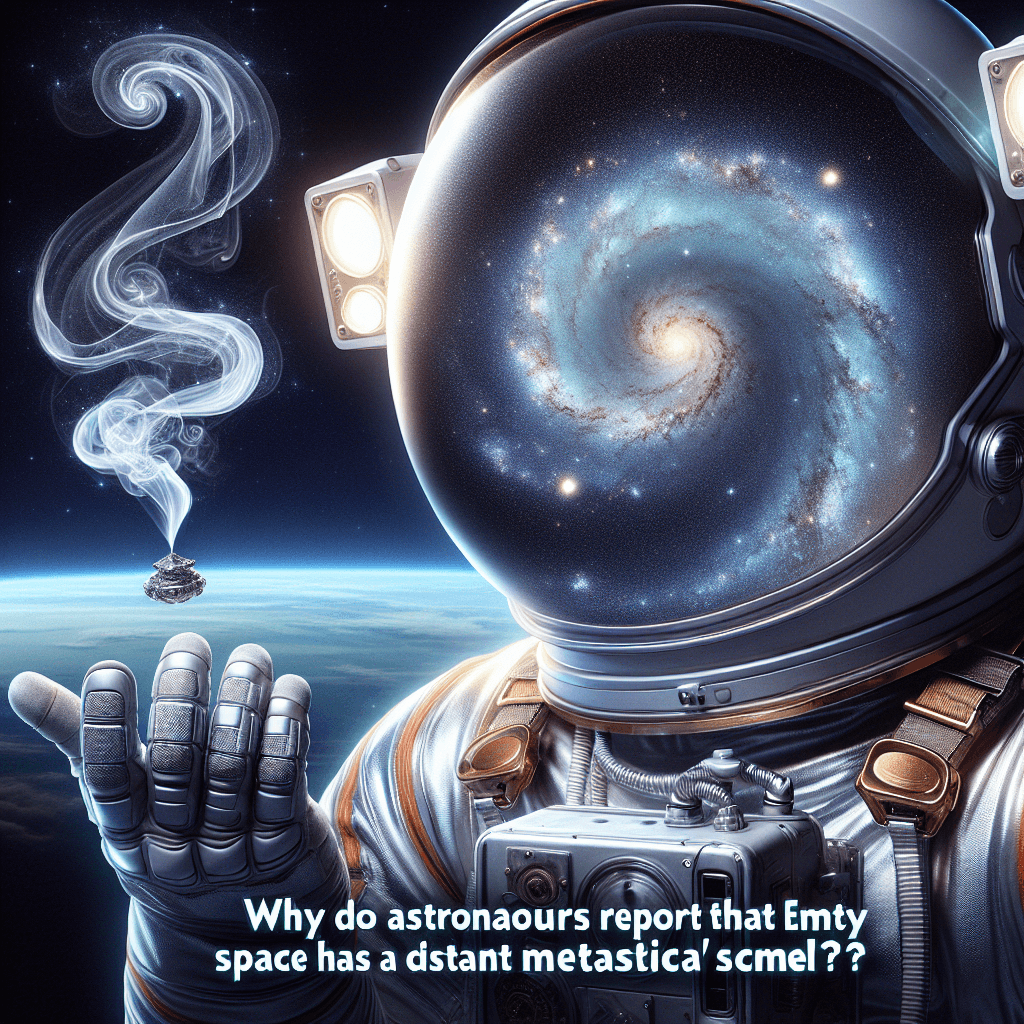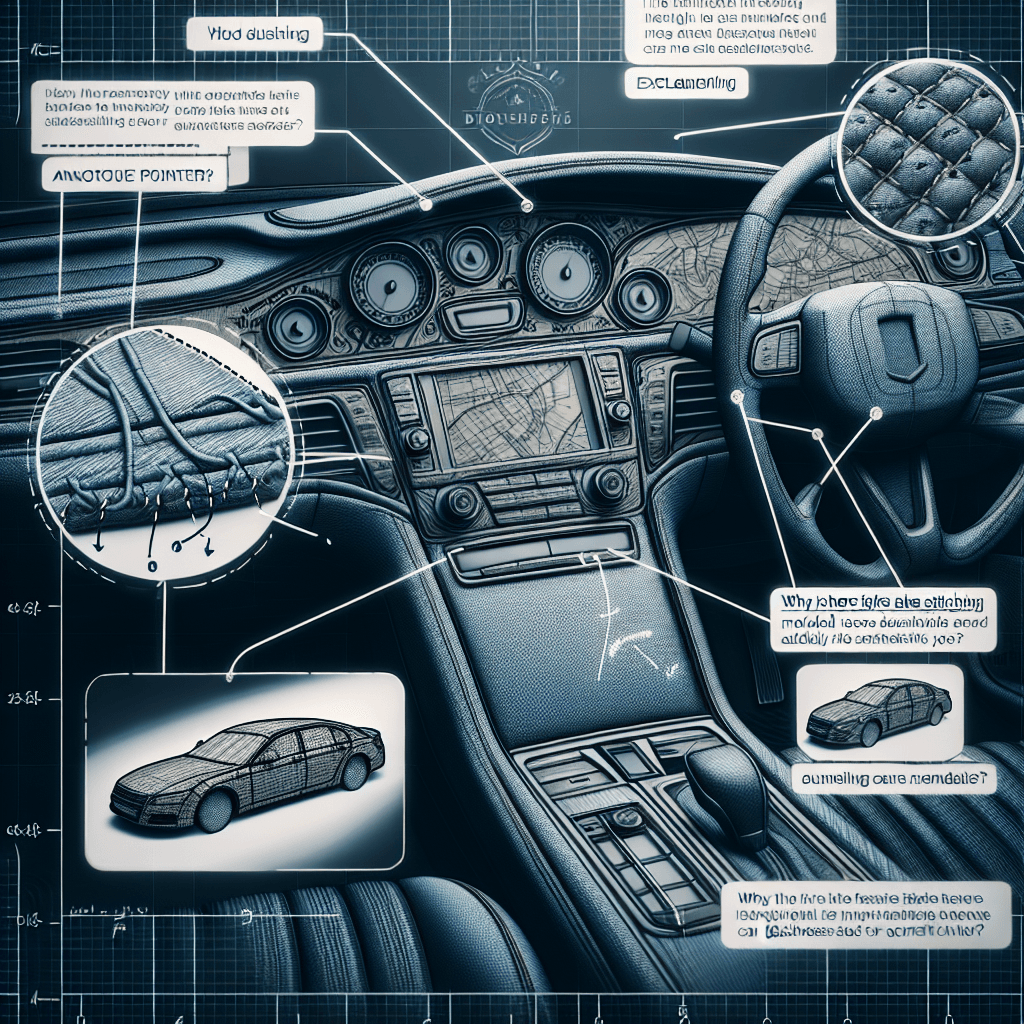Why do astronauts report that empty space has a distinct metallic smell
After a spacewalk, astronauts report a puzzling scent of seared steak and hot metal clinging to their suits. Discover the bizarre atomic reaction that gives the vacuum of space its unforgettable signature smell.


Too Long; Didn't Read
TLDR: Astronauts are not smelling space itself, but rather tiny particles from dying stars that stick to their suits. When these particles come into contact with oxygen inside the spacecraft, they create a chemical reaction that produces a distinct metallic odor, similar to welding fumes or burnt steak.
A Whiff of the Void: Why Do Astronauts Report that Empty Space Has a Distinct Metallic Smell?
Imagine floating in the silent, star-dusted expanse of space. What do you see? Infinite blackness punctuated by brilliant light. What do you feel? The strange sensation of weightlessness. But what would you smell? It’s a trick question, of course. The vacuum of space has no air to carry scents. Yet, one of the most consistent and curious reports from astronauts returning from spacewalks is that space has a distinct smell. They describe it as a sharp, metallic tang, like seared steak, hot metal, or spent gunpowder. This post will unpack the science behind this cosmic aroma and explore why the "emptiness" of space leaves such a memorable scent on those who venture into it.
What Are the Astronauts Smelling?
You can’t simply open your helmet and take a whiff of the cosmos. The smell of space is a secondhand experience, noticed only after an astronaut has completed an extravehicular activity (EVA), or spacewalk. Upon re-entering the airlock and removing their helmets, astronauts are hit with a potent and unique odor clinging to their suits, helmets, and tools.
NASA astronaut Don Pettit, who has spent over 370 days in space, described it vividly on a NASA blog: "The best description I can come up with is metallic; a rather pleasant sweet metallic sensation. It reminded me of my college days where I labored for many hours with an arc welding torch repairing heavy equipment for a small logging outfit. It reminded me of pleasant sweet-smelling welding fumes. That is the smell of space."
This account is not unique. From the Apollo missions to the International Space Station (ISS), astronauts have consistently reported this "burnt" or "metallic" smell. The question is, what causes it?
The Science Behind the Scent
While we can’t bottle the scent of space, scientists have several compelling theories that explain this phenomenon. The smell isn't from a single source but likely a combination of chemical reactions and cosmic dust.
The Atomic Oxygen Theory
The most widely accepted explanation involves atomic oxygen. The space just outside the protective bubble of Earth’s atmosphere is not a perfect vacuum. It’s filled with, among other things, single atoms of oxygen. On Earth, the oxygen we breathe is diatomic (O₂), meaning two atoms are bonded together. In the vacuum of space, intense ultraviolet radiation from the sun splits these O₂ molecules into highly reactive single atoms, or atomic oxygen.
During a spacewalk, these solitary oxygen atoms adhere to the fabric of the spacesuit. When the astronaut returns to the airlock and repressurizes it with breathable air (O₂), a chemical reaction occurs:
- The highly unstable single oxygen atoms (O) clinging to the suit eagerly combine with the molecular oxygen (O₂) in the air.
- This reaction forms ozone (O₃), the same molecule that makes up the Earth’s ozone layer.
- Ozone has a sharp, acrid smell, very similar to the metallic scent of a lightning strike or an old television set, which astronauts often compare to the smell of space.
The Cosmic Barbecue: Polycyclic Aromatic Hydrocarbons
Another major contributor to the scent of space comes from the byproducts of dying stars. Throughout the galaxy, there are clouds of tiny dust particles known as polycyclic aromatic hydrocarbons (PAHs). These are carbon-based compounds that form during the combustion process. On Earth, we encounter PAHs all the time; they are found in:
- Burnt toast
- Grilled meat
- Automobile exhaust
- Coal and oil
These molecules drift through the cosmos, remnants of stellar explosions and the formation of new star systems. Like atomic oxygen, PAHs can cling to an astronaut's suit during a spacewalk. Once back inside the ISS, these compounds interact with the air and moisture, releasing their characteristic "seared steak" or "barbecue" odor. This theory directly explains the "burnt" aspect of the smell astronauts report.
The Vibrations of Ions
A less common but fascinating theory involves the energy of ions. Some scientists, like those working on the Rosetta probe that studied Comet 67P, suggest that smell isn't just about molecules but also their vibrational energy. While this is a complex area of scent science, it's possible that the high-energy particles bombarding an astronaut's suit could contribute to the unique sensory experience upon their return to the station.
A Scent of the Universe
The strange smell of space is more than just a piece of astronaut trivia; it’s a direct, sensory link to the raw chemistry of the universe. It’s a reminder that even the vast emptiness is teeming with reactive elements and the ancient dust of long-dead stars. The next time you look up at the night sky, you can imagine not just its visual splendor but also its unique and potent scent—a mix of stellar fireworks and electrical sparks, carried home on the suits of humanity’s bravest explorers.


